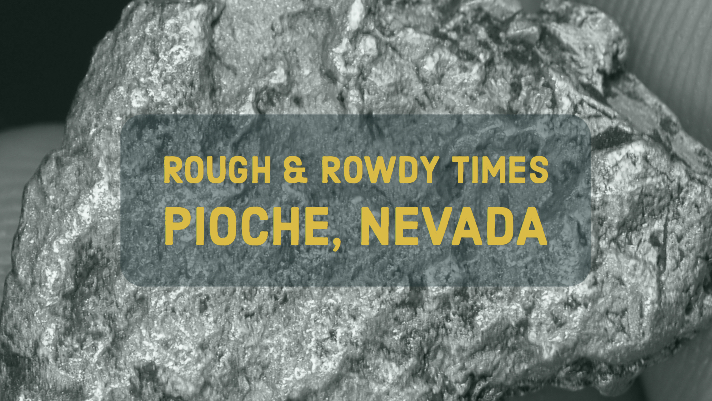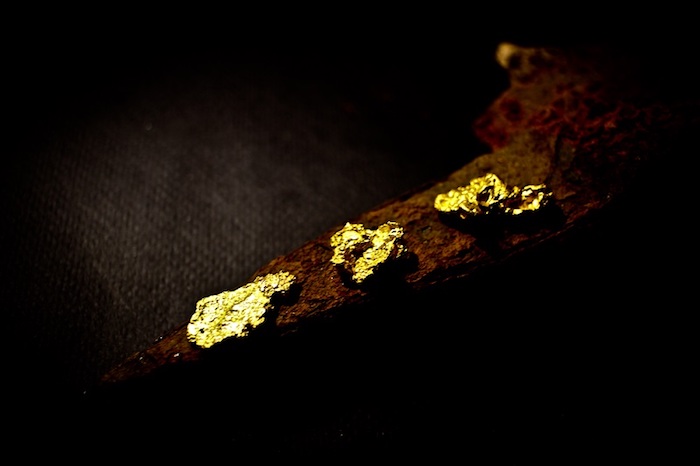
Move over Tombstone and Dodge City. You would be hard pressed to find a frontier mining town with a more violent history than Pioche, Nevada. In 1873, the Nevada State Legislature received a report from the state mineralogist:
“About one-half of the community are thieves, scoundrels and murderers. Hired gunmen were imported at the rate of 20 a day to fight mining claim encroachments. The sheriff’s office could count on about $40,000 a year in bribe money. It was so bad 75 people were killed before one died a natural death.”
A Rocky Start for Miners in Pioche
The town of Pioche began as a mining camp with no law whatsoever. The location of Pioche is pretty remote, allowing violence to flourish. Gold and silver were discovered in 1863 by William Hamblin, a Mormon missionary. Hamblin was lucky enough to be friends with the Paiute indians, who showed him the area that would eventually produce $40 million in ore.
Indian raids were so prevalent that the area was abandoned by settlers in 1864.
Hamblin eventually sold his claim to a French banker from San Francisco by the name of Francois Pioche, but was poisoned in 1872 before he could testify in court as to the mine’s ownership. Hamblin realized he had been given a poisoned drink, but died before he could reach his home in Gunlock. Pioche went on to found the actual town of Pioche in 1878.

Thousands of Scoundrels
Although mining activity really began in earnest in Pioche in 1868, it really took off in 1871, when the county seat was moved from Hiko to Pioche. By 1872 the population was over 7,000 souls, with more brothels and saloons than the citizens could shake a stick at. Chaos reigned, and the town cemetery, Boot Hill, boasts a Murderers Row, containing the mostly unmarked graves of more than 100 murderers.
As the town grew, reaching a population of 10,000 at its highest, more and more women and children came in, and the town began to settle down a bit, with family men looking to make an honest living not necessarily related to mining. Charles A. “Jack” Harris was not one of those men, and decided he could make a better living robbing Wells Fargo stagecoaches.
Stagecoach Robbers hit the Payroll
It was a not a particularly difficult matter to waylay the stagecoaches carrying the mine payrolls to Pioche. Although they could not prove it was Harris, it was common knowledge he was the culprit. The station agent decided he would pay Harris to be on the porch of the express company at the time the stage arrived, thus insuring that he would be unable to rob it.
In order to keep his reputation intact, Harris promptly showed up for the arrival of every payroll stage, and yet the stages were found to have been robbed anyway. Unbeknownst to the agent, Harris had a shortcut back to Pioche which allowed him time enough to rob the payroll and still be on the porch before the stage arrived. He may have been a thief, but he was no dummy!
Also Read: Southern Nevada’s Gold – A Mining Boom in Searchlight
Mine Closures and Recent Activity
This silver deposit was somewhat isolated even by Nevada standards. Most of the big mines in Nevada are in the north and central parts of the state. The Pioche strike was considerably rich for the areas.
The mines were closed in 1876, and that was the end of the bust. During World War II, there was some mining activity due to the lead and zinc deposits in the area, but today mining is nearly nonexistent in Pioche. Cost of production to work the mines exceeded the richness of gold and silver ores that could be extracted from the ground.
Visiting today, you would have little indication that this was once one of the roughest, dirtiest mining towns in all of the West.
Next: Early Spring Prospecting in the Desert

